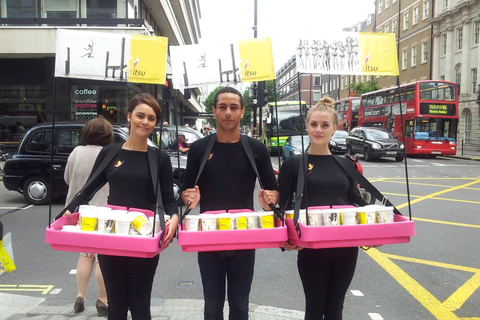
Many brands still limit their sponsorship programs to promotional or tactical activations. They focus solely on the experiential side of things instead of having a program that uses many channels and dedicated messages to communicate the associations between the brands.
Don’t get us wrong. Experiential tactics serve a purpose and can be a lot of fun. But investing in an effective overall sponsorship program is another beast entirely. It requires more thinking, more planning and more money, It must be devised to support the overall brand or corporate strategy and have what we call “3D” activation programs that take full advantage of the sponsorship medium by activating every communication channel possible: public relations, advertising, digital, content, point of sales, etc. To tell the difference between a tactic and a strategy: A tactic is something you use once (“I am calling a friend to get me a meeting with customer X”) while a strategy is something you use repeatedly (“Always get a warm referral build your customer base”).
A sponsorship program that is tactical in nature has no long-term vision, goal or strategic alignment. Success is measured solely by the reach and number of interactions. Sound familiar? If so, a word of advice: put your money elsewhere.
Sponsorship programs that take full advantage of all the possibilities that sponsorship can offer as a communication tool have these characteristics: they have set objectives that are not served as well (or not at all) by other communication channels, there is a long-term focus, and there are sufficient human resources and money to support the partnership. There has to be either a natural or “made up” fit between the two brands and, finally, the program has to be aligned with corporate, brand or marketing objectives.
One particularly well crafted program using a 3D approach is the partnership with Jeff Bridges and Square Space (2016-17 Sponsorship Guidebook). To demonstrate the capabilities of the Square Space platform, a content management system that allows users to create a nice looking transactional website in just a few steps, Jeff created a real sleeping tape. The whole process was documented and lived on various platforms. Consumers could buy the tape or listen to it online. All proceeds went to No Kids Hungry, a US non-profit with which Bridges has had ties for many years. The whole initiative was also pushed by traditional advertising, with a very subtle brand presence. Though not a long-term initiative, it is a good example of a very broad activation program.
You should not use sponsorship when it is not linked to a broader communication strategy and if other communications tools are better to convey your message. Sponsorship is effective in the long run, with sufficient resources involved and a clear set of objectives to attain, objectives that are not easily tackled with other communication tools.
